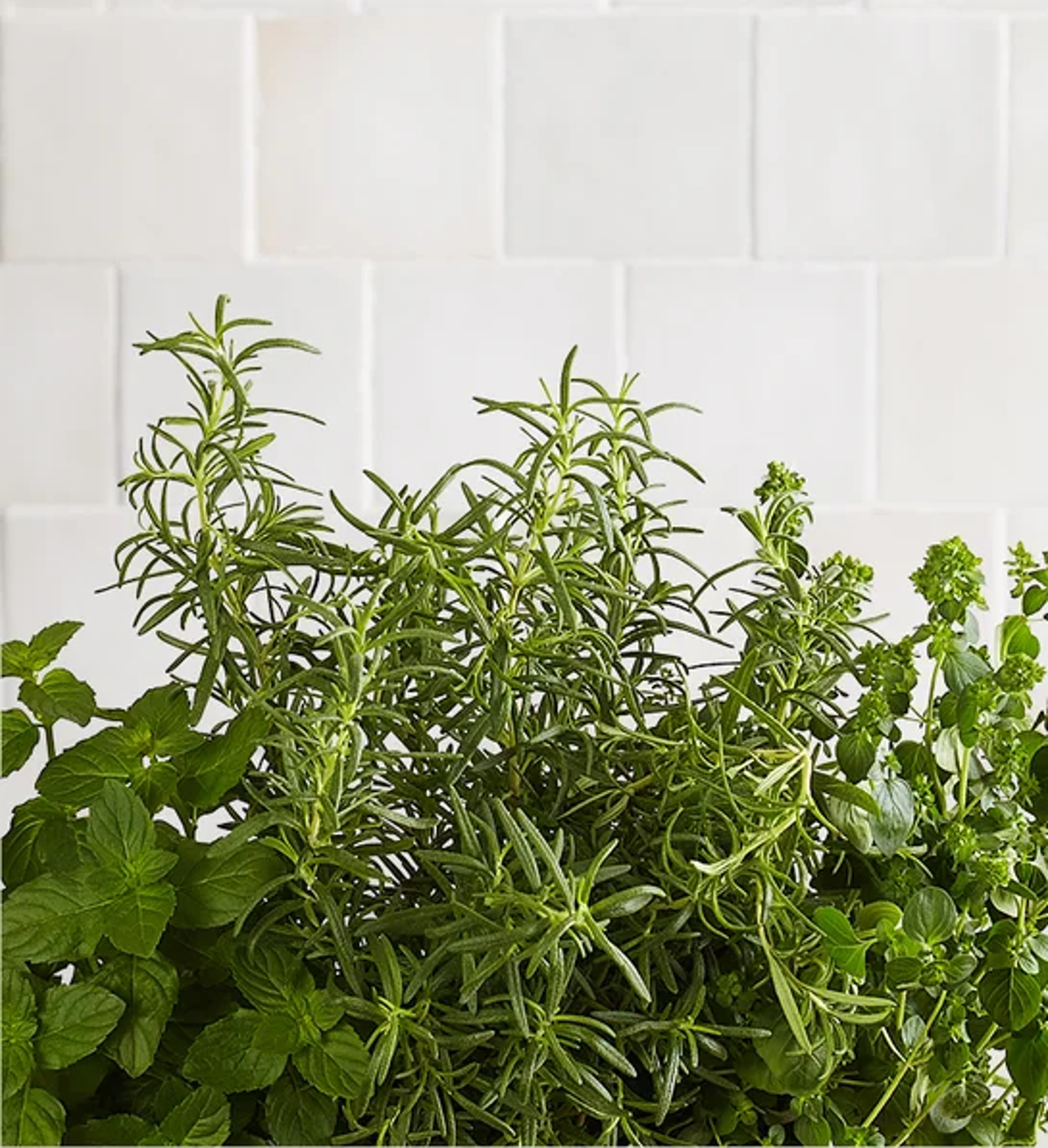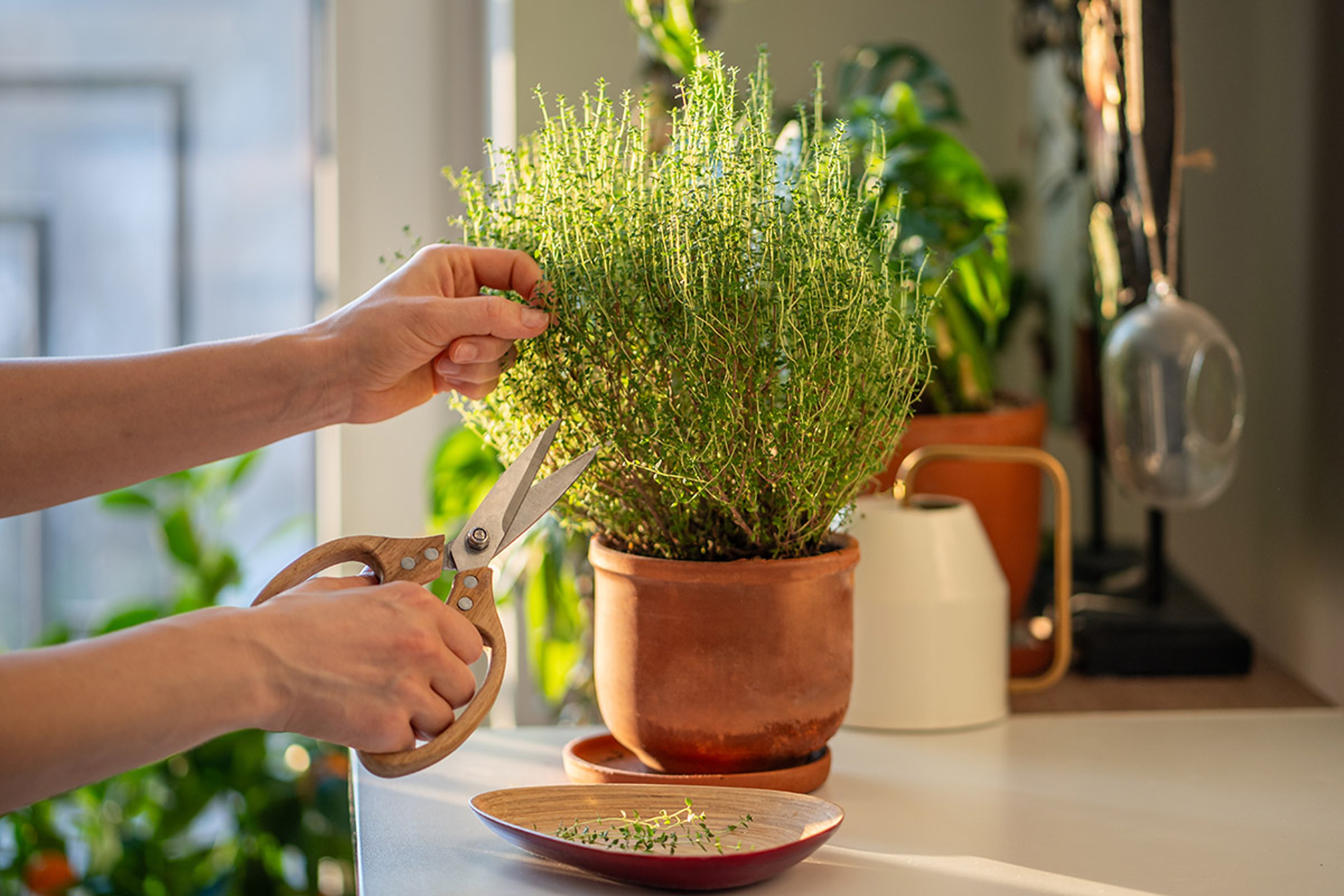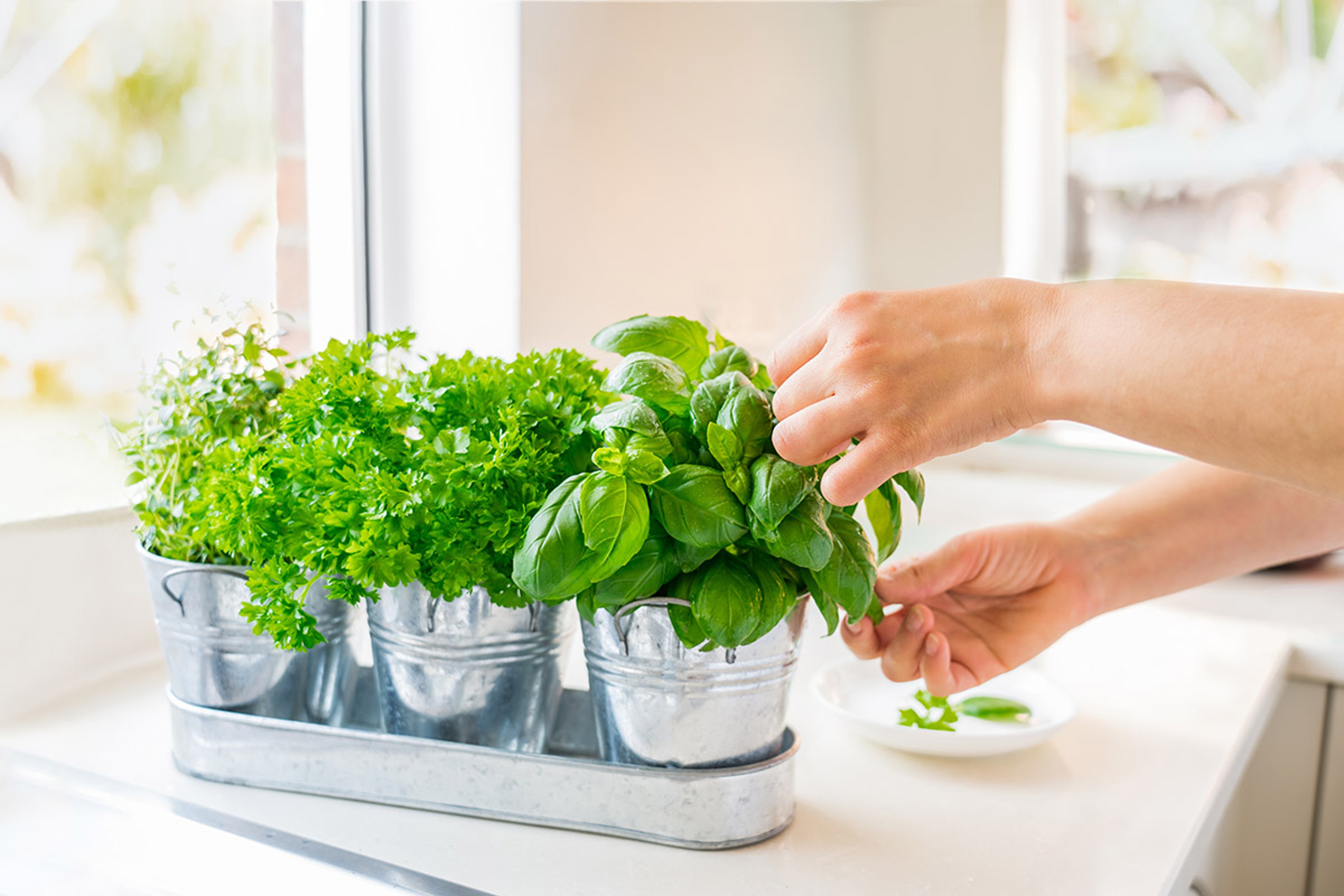The Easiest Ways to Let Your Indoor Herb Garden Grow
The good news is, you don’t need a green thumb to cultivate these aromatic plants in your home.
Aug 06, 2024
If you’ve ever left a friend’s house with a bouquet of homegrown sprigs of mint to take home with you and wondered how to DIY your own herb garden, here’s the good news: Even the most beginner gardeners can cultivate a gorgeous indoor herb garden.
Not only can you grow herbs right on your windowsill — which makes this a fun project for city dwellers who don’t have any outdoor space to finesse their green thumbs — you only need a little light and water to make your garden grow.

Infusing your indoor space with the smell of such fresh herbs as basil is one of the best parts of growing herbs indoors, says Todd Auerbach, vice president of sales and product development at Pacific Royal, a company that ships plants and herbs nationwide.
“These herbs taste good when added to pastas and other dishes, too,” Auerbach says.
Read on as Auerbach shares his tips for cultivating an indoor herb garden. With little effort, and practically zero gardening acumen, you, too, can use your homegrown greens to jazz up your favorite dishes, muddle in your cocktails, or even help boost your immune system.
The easiest (and hardest) herbs to grow
Some types of herbs can grow, and thrive, if started from seed or cuttings. The varieties found in this kit are examples of these.
Other herbs, however, have seeds that tend to be harder to germinate. For those herbs, Auerbach says, purchasing a small plant is a much better idea.

When it comes to starting your indoor herb garden, less is more. Pick herbs you’ll incorporate into your favorite recipes and opt for less fussy varieties, such as thyme, oregano, and sage.
“If you do well with these herbs, you can consider trying to grow rosemary, but this is a temperamental plant,” he says. “It requires excellent drainage and additional succulent potting soil to make it grow.”
In addition to rosemary, herbs like lavender and basil, which have more frequent water needs, can also prove more challenging to growers, Auerbach adds.
The optimal conditions for your herbs
Growing a healthy indoor herb garden — like plants in general — depends on providing the right amount of water and light as well as the proper type of container for each pot. Here’s more on each:
Watch the watering
“Most people tend to overwater or underwater,” Auerbach says. “You can tell if you’ve underwatered if the plant is bone dry and, when you put the top half of your finger into the soil, it’s still dry.”
Just as important: One sure sign of overwatering is a plant with wilted or yellowed leaves. If you’ve overwatered, give your plant a day or two to recuperate before you water again.
Find a sunny spot
Ideally, you’ll put your herb garden in a sunny spot (a south-facing location is best). “In other words, don’t put your herbs in the middle of the room,” he says. “And don’t keep your herbs in the window during those times of the year when the temperature drops significantly at night.”
Tip: An LED grow light can keep your herbs thriving, especially during the winter months.

Contain your herbs
You can plant herbs in all sorts of containers, from vintage coffee cans to upcycled bins. That’s fine, provided the container holds moisture. “We send our herbs to customers in a 4-inch grow pot with a liner inside that has drainage holes,” Auerbach says. “We always recommend that when you water your plants, if it’s in the grow pot, let it sit in the sink until it drains. Then, once it’s damp, you can put it right back into its decorative pot.”
The 411 on growing (and caring) for your herbs
Now that you’ve gotten into a routine with growing and caring for your herb garden, consider doing a few more things to keep your plants as healthy as possible.
Aim to fertilize your herbs every two weeks using a water-soluble, all-purpose fertilizer. (This is necessary because the frequent waterings that indoor plants require deplete the soil of its nutrients.) Also, don’t overdo the fertilizer — half the recommended amount is just fine.
Finally, if you want to be the ultimate plant parent, turn your plant a quarter clockwise once a week. “This will make sure every side of your plant gets ample sunlight,” Auerbach says. “This will encourage more growth, too.”
The best time — and way — to harvest your herbs
When your plants are bushy and full, that’s a good sign that you should snip them here and there with kitchen shears or pinch the leaves off with your fingers, Auerbach says.
But don’t do too much cutting.
“No matter what, never trim more than a third of the plant,” he says. “You want to allow your plant to have some regrowth.”

On the flip side, if your plant is getting leggy (meaning that the shoots have gotten long, stretched, yellow, and/or are falling over), you can (and should) snip them at the base.
“Remember: You don’t want to get too aggressive when you do this,” he says. “Your goal is to make sure you don’t remove more than a third or a quarter off at one time.”
Other herb garden accessories
Now that you know how to grow herbs indoors, you’re going to want to add some other items to your setup to help elevate you to ultimate herb dad (or mom) status.









